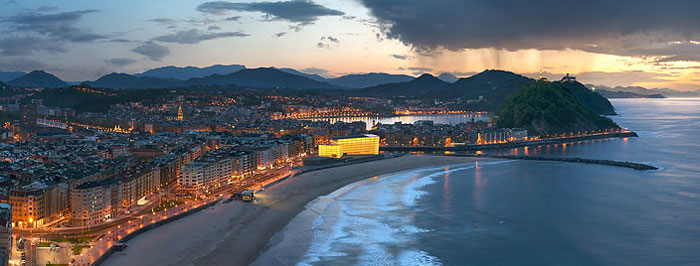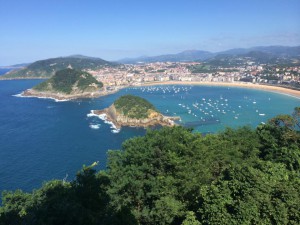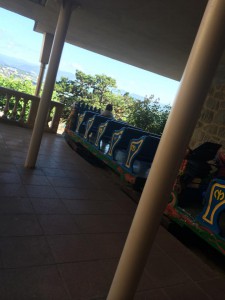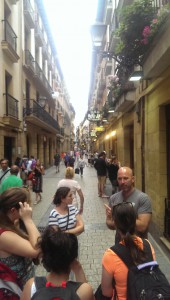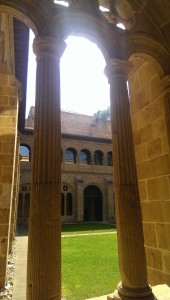(posted on behalf of Kathleen_Cameron@student.uml.edu)
If I had to choose one aspect of this experience that I enjoyed the most it would be the fierceness of the Basque culture. Throughout this trip, that has been the theme that has been carried over again and again. From the willingness of my host family to answer any and all questions, to the smile on a local person’s face when I stumble my way through “hello” or “thank you” in Basque, this experience has picqued my interest in cultural immersion. The Basques are a passionate people, intent on sharing their culture with anyone who is interested to learn.
An example of this desire to perpetuate their culture is literally cemented in rock. The Comb of the Wind is an architectural structure of three pieces created by Basque artist Eduardo Chilled Juantegul. The three sculptures, each within varying distances, symbolize the past, present, and future. The aspect that I enjoyed, however, was what they were constructed with. Each sculpture was made from iron gathered from a multitude of ore deposits in the Basque mountainside. So, right down to the core, all of the sculptures are entirely Basque-made. And, because they are directly on the coast, these structures are the first thing in the city the air touches. So, even before the air reaches the city it has already been enriched with a piece of Basque culture. This symbiotic relationship between the mountains, sea, and wind in this sculpture signifies how much the Basque people value, and work to maintain, their culture.
From the Comb of the Wind our group traveled to the top of Mount Igueldo, which had the most incredible views of San Sebastian. There was also a hotel and amusement park at the top, so many of us passed some time on the bumper cars or riding the roller coaster. It was the perfect way to spend an afternoon, and the funicular rides up and down the mountain provided a relaxing and unique mode of transportation.
This trip to San Sebastian has been unparalleled to any other life experience I have had thus far. Traveling to Europe for the first time has undoubtedly expanded my previously closed-off horizons. San Sebastian, being a popular tourist city, has an amazingly diverse amalgamation of various cultures. I’ve been fortunate enough to meet some amazing people so far, and each one has taught me something different. The Basques are an amazing, intense people. It is clear that they are deeply proud of their culture, and that is certainly what I admire the most.
I have had an incredible and unbelievable experience so far. Our previously mundane classrooms have turned into mountain tops and beaches, and our discussions about Basque culture are unlike those I have ever had. From spending afternoons on the beach, wandering and exploring the city at night, and yes, even the Spanish class at Lacunza, I have fallen in love with San Sebastian. I cannot reiterate enough how lucky I am to be in this position. Each day brings with it new adventure and I cannot wait to see what next week has in store!
